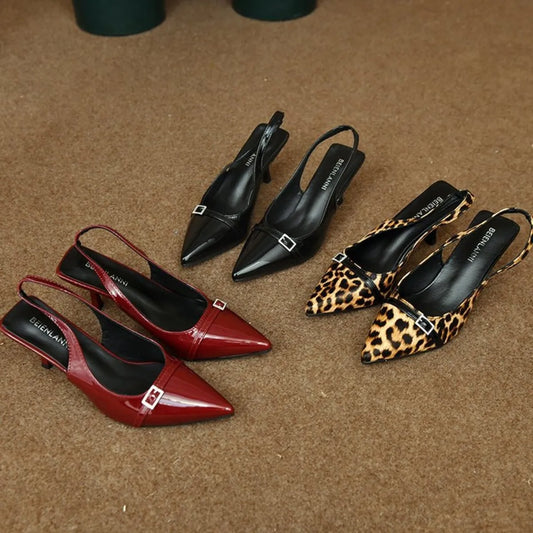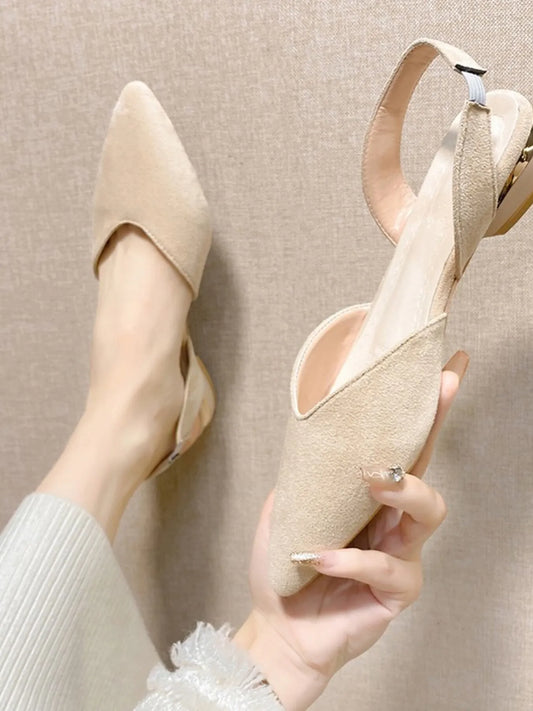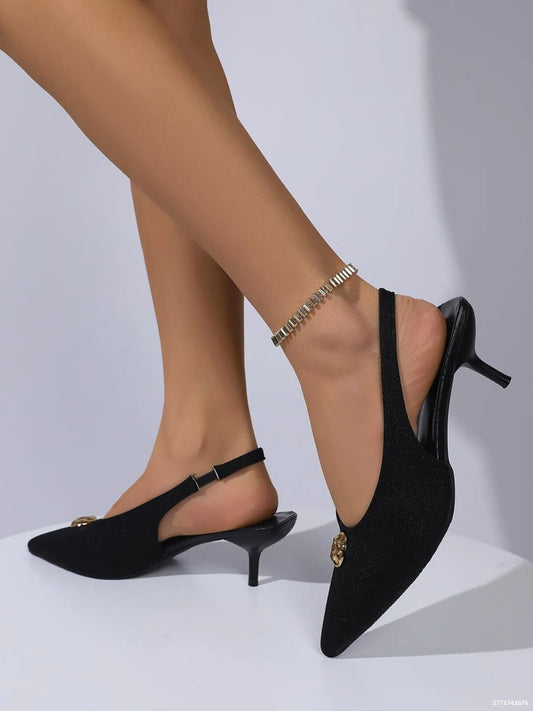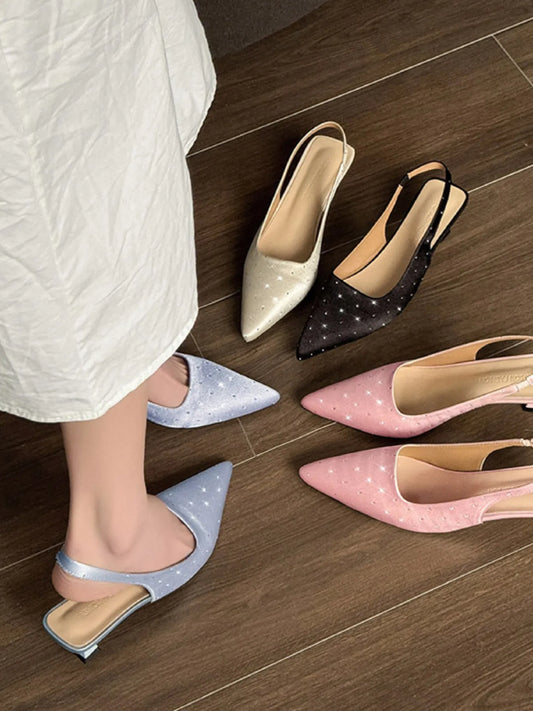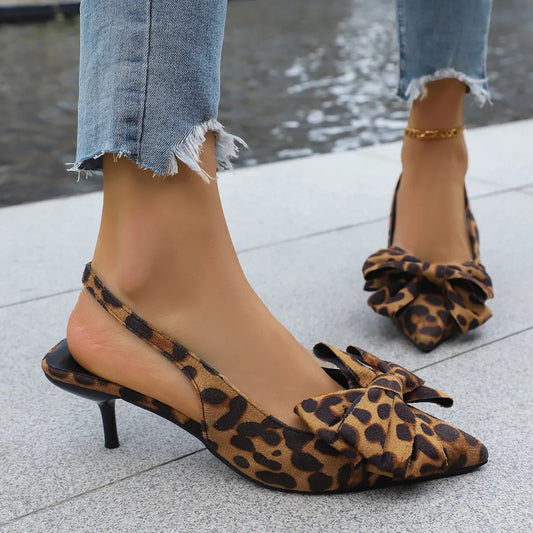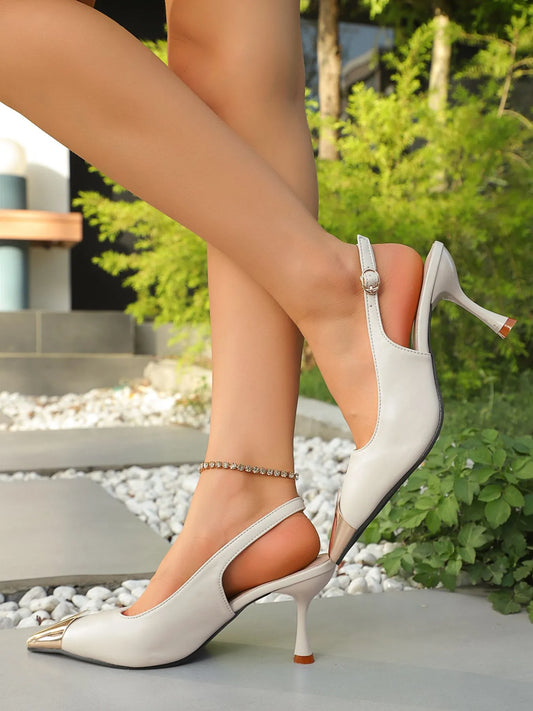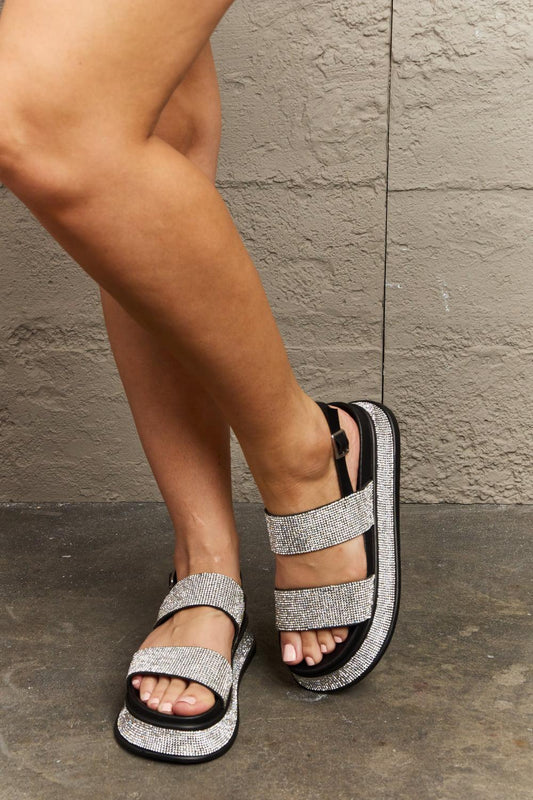Slingback Shoes in Women’s Fashion
Summary
Slingbacks — identifiable by the strap that cups the back of the heel while leaving it exposed — have evolved from Coco Chanel’s 1957 two-tone pumps to a modern work-to-wedding staple that designers and mass brands repeatedly revive. Their appeal lies in a hybrid personality: as breathable as a sandal yet as structured as a pump, they transition comfortably from weekday meetings to black-tie receptions when chosen in the right fabrication and heel height. Current runway collections keep the silhouette in rotation, but etiquette rules still apply: matte leather slingbacks with a closed toe and modest heel read board-room ready, while satin or embellished versions can hold their own alongside tuxedos and floor-length gowns. The following report unpacks the shoe’s history, anatomy, trend momentum, and practical dress-code guidance.
A Brief History of the Slingback
The slingback’s defining feature is the single strap that secures only the rear of the foot, classifying it as a sub-category of sandal in technical footwear terms.
Chanel’s debut of a beige body with a contrasting black toe in 1957 cemented the style’s association with refined Parisian dressing and offered women a more walkable alternative to the stiletto of the era.
Subsequent decades saw cyclical revivals, but 21st-century fashion’s appetite for “heritage pieces” has restored the slingback to global ubiquity, visible on red carpets from Cannes to award-season galas.
Anatomy Matters
Unlike a mule, whose backless profile relies on friction alone, the slingback’s strap provides security while permitting airflow, a distinction often highlighted in retail and podiatry guides.
Because tension is concentrated on a narrow band, materials with a hint of elasticity or adjustable buckles tend to mitigate rubbing and enhance longevity.
Modern Resurgence: 2024 – 2025
Runway reporting for spring/summer 2025 places kitten-heeled slingbacks among the season’s most sensible yet fashion-forward silhouettes, sharing space with woven flats and sculptural pumps.
Street-style editors echo the sentiment, calling slingbacks the year’s most enticing temptation for their minimal lines and agility from day to night.
Retail evidence supports the buzz: publications from lifestyle magazines to industry trackers spotlight brisk sales of under-$50 versions alongside luxury iterations from Prada and Saint Laurent.
Occasion Decoder: Where Slingbacks Shine
| Setting | Recommended Features | Why It Works |
|---|---|---|
| Office & Client Meetings | Closed or almond toe; 2 – 3 in. heel; matte leather | Reads polished while sparing feet an eight-hour pinch. |
| Weekend & Travel | Low kitten heel or flat; slingback ballet hybrids | Provides ventilation and packs flat in carry-ons. |
| Cocktail & Semi-Formal | Pointed toe; patent or suede finish; optional embellishment | Balances glamour with mobility for standing receptions. |
| Outdoor Weddings | Block heel no higher than 75 mm; textured sole | Stability on grass plus airy comfort for summer heat. |
| Black-Tie / Red-Carpet | Satin or fine leather; sleek strap; impeccable condition | Aligns with formal codes when paired with floor-length gowns and tuxedos. |
Formalities: Are Slingbacks Too Casual?
Dress-code authorities focus less on the open back than on overall harmony with attire. Etiquette guides remind guests that shoe choice should reflect the formality of the invitation rather than personal convenience.
For white-tie events, traditional pumps remain safest, but well-crafted slingbacks in satin or kid leather with a slim heel can comply when the rest of the ensemble is impeccably formal.
At black-tie weddings, fashion sites dedicated to bridal etiquette endorse slingbacks, noting that a secure strap prevents the click-off mishaps common with backless mules during processions.
Corporate evening galas typically accept slingbacks provided the toe is closed and the color palette is subdued; streamlined versions rank high on office-to-event lists.
Styling Principles
- Mind the Hemline – Slingbacks visually elongate the ankle; pair midi skirts or cropped trousers that reveal the strap for intentional styling.
- Play with Texture – Mixing tweed suits with patent straps or silk gowns with velvet slingbacks introduces tactile depth without accessory overload.
- Coordinate Hardware – A gold buckle can echo jewelry tones, subtly unifying a look without overt matching.
- Consider Surface – Grass, cobblestones, or dance floors inform heel width; petite block heels carry the silhouette’s elegance onto uneven terrain.
- Invest in Fit Adjustments – Cobblers can add discrete elastic inserts to vintage pairs for a snugger hug, prolonging wearability.
The Comfort Equation
Consumer tests show that kitten-heeled slingbacks remain comfortable beyond eight hours when cushioned footbeds and non-slip soles are in play, expanding their utility for day-long events.
Surveys reveal that 78 percent of respondents find the strap configuration more forgiving than fully enclosed heels during prolonged standing.
Designers have seized on this, introducing sculpted foam insoles and adjustable micro-buckles in 2025 collections.
Conclusion
Far from a mere retro flourish, today’s slingback stands at the intersection of heritage design, ergonomic refinement, and evolving dress codes. When selected with context in mind — toe coverage for solemn ceremonies, kitten heels for long receptions, luxe materials for gala marquees — the silhouette is sophisticated enough for formal dress while remaining relaxed enough for an off-duty lunch. In other words, slingbacks are only “too casual” when styling decisions ignore venue, fabric, and fit. Treated thoughtfully, they remain one of women’s fashion’s most versatile allies, dangling its strap confidently between breezy nonchalance and polished intent.

